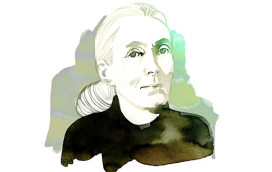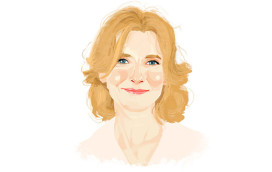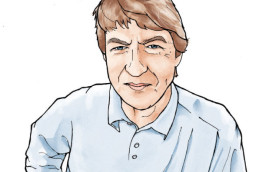1. Driving down to Troon, Scotland, 1956
I left the RAF when I was 19, but I couldn’t afford a car until I was 26. It was a Fiat 600, and my very first journey was from Glasgow down the west coast of Scotland to a seaside town called Troon. I’ll never forget the feeling, just me in my new car on a sunny day. Because it was Italian, it was a bit sexier than a British car – a chance to get the prettiest girls. Happiness.
2. The Berlin Wall goes up, 1961
I was sent to Berlin for the London Daily Express, and we knew something was going on as the city was being systematically closed off. The wall went up quickly, the barbed wire and the barricades encircling the city. I went back in 1989 for Life – I never thought I’d see the Berlin Wall come down in my lifetime. I’m glad I was there to see it.
3. Following the Beatles to Paris and America, 1964
One night in January 1964 I got a call from The Express picture desk to go to Paris to photograph the Beatles. I was a bit annoyed because I had no interest in photographing pop stars. But as I walked into the hall they started to play All My Loving, and it was electric. I knew I was on the right story. My
favorite picture of the Beatles having a pillow fight was taken in Paris. Within two weeks I was on a plane to America with them for The Ed Sullivan Show. The Beatles changed my life because America was a fascinating place to be in the 1960s; after that, I never came back.
4. The Meredith march, Mississippi, 1966
The Civil Rights Movement was at its height when I drove to Tuscaloosa,
Alabama, HQ of the Klu Klux Klan. I knew this was going to be dangerous, but it was my job. I met the grand wizard, Bobby Shelton, and attended Klan meetings with him. I followed the whole march; I went to rallies, I was tear-gassed, saw beatings, hid film in my socks. When I met Martin Luther King, I said to him, “This is just awful.” And he said, “It is awful being a black man in this country.” Jobs like these were journeys into the heart of America.
5. The assassination of Robert Kennedy, Los Angeles, 1968
I grew to like Bobby Kennedy immensely. He was fun to be with on the campaign, very easy to work with. When he was shot in the kitchen of the Ambassador Hotel in LA, I was 12 inches away from him. It was chaos and people were punching me in the head and shouting, but I just kept moving, trying to get the shots. I photographed his wife Ethel screaming, and people said, how could you do that? He was someone I cared about. When something like this happens you know you are recording history. The picture of the straw boater is one of my most dramatic. This was Bobby’s blood. This was the end of the road.
6. 9/11, New York City, 2001
By the time I got down to the site, the second plane had hit. There was dust and debris everywhere and the police weren’t letting anybody through, so I took my pictures from the perimeters. Lots of photographers are suffering now from what they inhaled that day, so in a way it was a blessing for me, but I had to be there to see what happened.
7. Returning home to Glasgow, Scotland
Glasgow is my home, I love to go back and smell it. It has a rough and tumble about it that is similar to New York. But no year is complete unless I go to Troon for a walk along the beach and have an ice cream or some fish and chips and look across to the Isle of Arran. That to me is Scotland. I get excited just getting on the plane.
Harry Benson
Eyewitness to some of the defining moments of our times for Life and Vanity Fair,
Scots photographer Harry Benson arrived in New York in 1964 and made it his home.
Here he describes seven memorable journeys from an extraordinary lifeIllustration: Jacob Pérez Enciso



